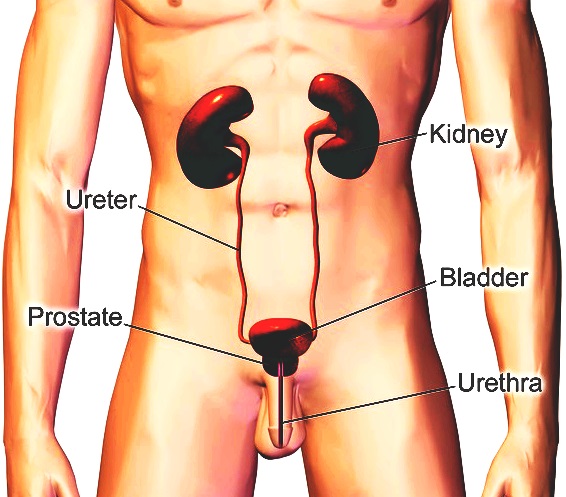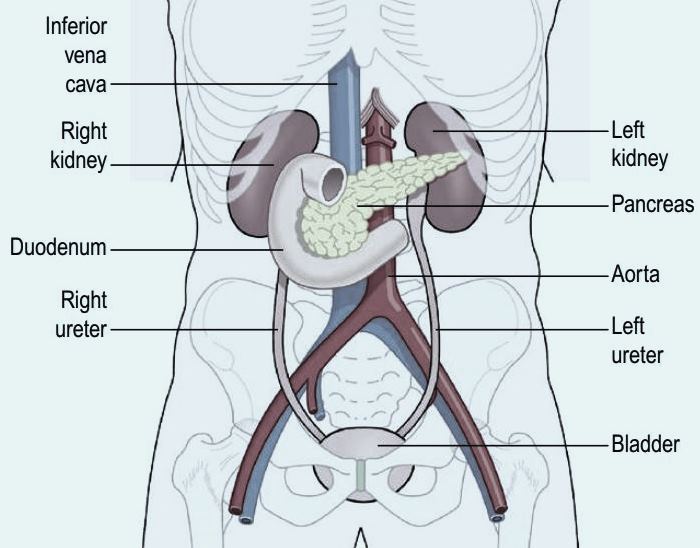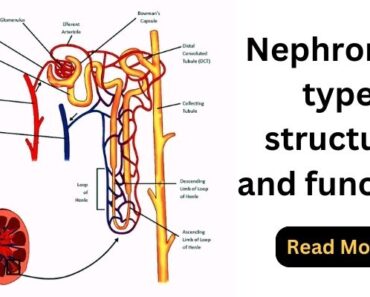The structure of the Anatomy and Physiology of the Urinary System is designed to remove wastes and excess fluid from the body. The urinary system is a collection of organs in the body that produce, store, and excrete urine. The organs of the urinary system are the kidneys, ureters, urinary bladder, and urethra.
The kidneys are a pair of bean-shaped organs, each about the size of a fist. They are located just below the ribs, one on each side of the spine. The ureters are two thin tubes that carry urine from the kidneys to the bladder. The bladder is a hollow, muscular organ that stores urine until it can be expelled from the body through the urethra.

The urine passes from the kidneys to the urinary bladder, which stores the urine until it is ready to be excreted through the urethra. The urinary system plays an important role in keeping the body healthy. Kidneys filter out harmful substances from the blood and keep the body healthy.
The physiology of the urinary system
About Anatomy and Physiology of the Urinary System, You know that the physiology of the urinary system begins with filtration in the glomerulus. In Bowman’s capsule, blood pressure forces plasma (the liquid portion of blood) and other substances out of tiny capillaries and into the Bowman’s capsule. This process of filtration creates a filtrate, which is composed of water, dissolved minerals, glucose, and amino acids. Glomerular proteins and red blood cells are too large to pass through the pores of the capillaries and remain in the bloodstream.
The second step of urinary system physiology is reabsorption. The tubules and collecting ducts of the nephrons reabsorb most of the substances that were filtered into the Bowman’s capsule, including water, glucose, amino acids, and potassium. This leaves behind urine that is very concentrated with wastes such as urea and creatinine.
Organs of the urinary system
Following are the major organs of the urinary system

The kidneys
Kidneys are two bean-shaped organs. The functional units of the kidney are the nephrons, numbering in the millions, that filter the blood in the kidneys and remove waste products and excess water from the body. The kidney is a retroperitoneal organ are located on either side of the spine in the lower back. Urine passes from the kidneys through the ureters to the bladder, which stores urine until it is ready to be excreted.
The Ureters
The ureters carry urine from the kidneys to the bladder. The ureters are two in number which is a tube-like structure about 25 cm long and are located posterior to the abdominal aorta and anterior to the psoas major muscle.
The urinary bladder
The urinary bladder is a hollow temporary store of urine until it is ready to be excreted. that is made up of smooth muscle fiber arranged in different directions called the detrusor muscle. Its urine storage capacity is 400 to 600 ml in normal conditions.
The urethra
The urethra is also a part of the urinary system which is a tube that carries urine from the bladder to the outside of the body. Its length varies between males and females, it is about 17 to 20 cm (7–8 inches) in males and 3 to 4 cm (about 1.5 inches) in females.
Functions of The Urinary System
The primary function of the urinary system is to remove wastes and excess fluid from the body. The kidneys produce urine by filtering blood. The urine passes from the kidneys to the bladder through the ureters. The bladder stores urine until it is ready to be excreted through the urethra.
The urinary system is also responsible for maintaining the body’s fluid balance and electrolyte levels. Urine contains water, salt, and other minerals that the body needs to function properly. The urinary system also helps to regulate blood pressure by removing excess fluid from the bloodstream.
Urinary System Diseases
Here is a brief description of some common diseases of the anatomy and physiology of the urinary system.
Kidney Stones
Kidney stones are small, hard deposits that form in the kidneys. They can cause pain and other symptoms when they pass through the urinary tract.
Urinary Tract Infections
Urinary tract infections (UTIs) are common bacterial infections of the urinary system. UTIs can cause pain and burning during urination, as well as a strong urge to pee.
Nephrotic Syndrome
Nephrotic syndrome is not a disease in itself but the result of a wide range of kidney diseases. It causes the kidneys to leak proteins into the urine, which can lead to swelling and other problems. commonly onset in childhood age between 2 to5 years.
Bladder Cancer
Bladder cancer is a type of cancer that starts in the bladder. It can cause pain and burning during urination, blood in the urine, and a frequent need to urinate.
Kidney Cancer
Kidney cancer is a type of cancer that starts in the kidneys. It can cause pain and swell in the back, blood in the urine, and a frequent need to urinate.
Benign Prostatic Hyperplasia
Benign prostatic hyperplasia is an enlargement of the prostate that is a non-malignant condition. Prostate enlargement affects all elderly men over sixty to some degree. It can cause urinary problems such as hesitancy, frequency, and urgency. It may also lead to bladder outlet obstruction (BOO) and progressive renal failure.
Urinary Incontinence
Urinary incontinence is the unintentional leakage of urine. It can be caused by many different factors including weak pelvic muscles, damage to the nerves physiologically or accidentally, it is affected by age group, and it ranges from mild leakage occasional to severe leakage causing wetting accidents. most common in elderly females than males.
Interstitial Cystitis
Interstitial cystitis is a bladder disease that results in recurring discomfort or pain in the bladder and pelvic region. The cause of interstitial cystitis is unknown, but it is thought to be an autoimmune disorder. Symptoms include frequent urination, pain during urination, and a persistent urge to urinate.
Chronic Kidney Disease and Chronic Renal Failure
In Chronic Kidney Disease and Chronic Renal Failure, kidney function is slowly lost and the kidneys may eventually stop working. When the kidneys fail, waste products and fluid build up in the body, causing swelling in the ankles, feet, and hands, shortness of breath, confusion, and other problems.
Kidney Stones
Kidney stones are made from crystals of salt (calcium oxalate approx 80%) or uric acid stone (about 10%). Uric acid is a waste product of the breakdown of protein. Stones may cause pain in the back, side, or groin and can block the flow of urine.
Hematuria
Blood in the urine (hematuria) occurs when red blood cells or their fragments escape from the kidneys and flow into the urine.
Diabetic Nephropathy
It is a common complication of diabetes type 1 and 2. Uncontrolled diabetes damages the kidneys. Due to this, the kidney is not able to filter the waste product. this can lead to increase blood pressure, high blood pressure (hypertension), and eventually kidney failure.
Also, Read
Urinary System Multiple-Choice Questions
What is a nephron its type structure function
Nursing Exam Model Question Paper A&P
AIIMS Staff Nurse Mock Test Series | Model Paper |Online Exam 1st






